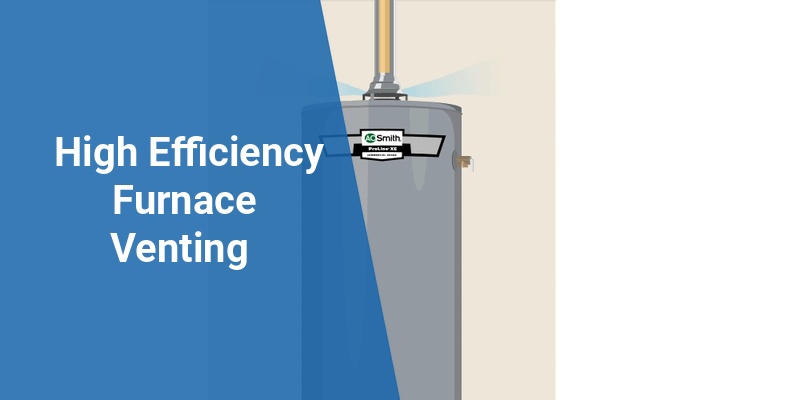High efficiency furnace venting is crucial for optimizing home heating systems while ensuring safety and compliance with building codes. These furnaces, known for their superior energy performance, require specialized venting methods to handle combustion gases and condensation effectively. This article explores key aspects of high efficiency furnace venting, including types of venting, installation best practices, and maintenance tips to enhance durability and efficiency.
| Venting Type | Description | Common Materials | Advantages | Considerations |
|---|---|---|---|---|
| Direct Vent | Uses two pipes, one for intake and one for exhaust. | PVC, CPVC, ABS | Sealed combustion increases safety and efficiency. | Must be properly sealed and insulated. |
| Sidewall Venting | Vents exhaust horizontally through an exterior wall. | Plastic piping (PVC/CPVC) | Easy to install; reduces roof penetrations. | Requires adequate clearance from windows and intakes. |
| Vertical Venting | Vents exhaust vertically through the roof. | Stainless steel, PVC | Good for tight sidewall spaces. | May require additional weatherproofing. |
The Importance of High Efficiency Furnace Venting
High efficiency furnaces operate with efficiency ratings above 90%, often up to 98%. Unlike traditional furnaces, these units extract more heat from fuel combustion, producing cooler exhaust gases that contain water vapor. Proper venting is essential to prevent moisture buildup, avoid corrosion, and maintain indoor air quality.
Venting systems must accommodate lower temperature exhaust and safely direct combustion gases outdoors. Improper venting can lead to backdrafting, carbon monoxide exposure, and shortened furnace lifespan.
Types of High Efficiency Furnace Venting Systems
Direct Vent Systems
Direct vent furnaces use two concentric pipes or two separate pipes: one brings fresh air for combustion, and the other expels exhaust gases. This sealed system prevents indoor air from mixing with furnace combustion air, enhancing safety and efficiency. Materials often include PVC and CPVC pipe due to their resistance to cool, acidic condensation.
Sidewall Venting
Sidewall venting allows for horizontal exhaust discharge through exterior walls. This method simplifies installation especially in slab-on-grade homes or where vertical venting is impractical. It requires clearances from windows, doors, and air intakes to prevent re-entrainment of exhaust gases indoors.
Vertical Venting Through Roof
Vertical venting uses pipes passing through the roof to discharge exhaust. Often stainless steel or plastic pipes are used depending on the model. Vertical venting is beneficial when sidewall venting is not possible but may involve more complex installation and increased weatherproofing demands.
Critical Installation Best Practices
Material Selection and Compatibility
Choosing the right venting material is essential. Plastic pipes like PVC, CPVC, or ABS are commonly used due to their corrosion resistance and ability to handle lower exhaust temperatures. Stainless steel is required for some models or when local codes demand metal piping. Always verify furnace manufacturer instructions and local building codes.
Call 888-906-9139 for Free Local HVAC Quotes – No Obligation, Just Savings!
Proper Slope and Pitch
Vent pipes must be installed with a slight slope (typically 1/4 inch per foot) returning toward the furnace. This encourages condensate drainage to the furnace’s built-in drain pan or trap, preventing water accumulation or pipe damage.
Sealing and Insulation
All joints and pipe connections must be tightly sealed with approved sealants to prevent gas leaks. Insulating vent pipes, especially those passing through unconditioned spaces, helps maintain exhaust temperatures and prevents condensation build-up outside controlled areas.
Clearance and Termination
Follow manufacturer guidelines and building codes for minimum clearances from windows, doors, and air intakes. Termination caps and screens should prevent animal entry and allow unimpeded exhaust dispersal.
Maintenance Tips to Ensure Safety and Prolong Lifespan
- Regularly inspect vent pipes for cracks, corrosion, or blockages such as bird nests or debris.
- Check furnace condensate drains to ensure they are clear and functioning.
- Schedule annual professional furnace and vent system inspections to detect and remedy potential leaks or ventilation issues.
- Replace deteriorated vent components promptly to maintain airtight seals and prevent carbon monoxide hazards.
Common Challenges and How to Overcome Them
Condensate Drainage Problems
Cool exhaust gases create condensate that must be properly managed. Slope misalignment or clogged drains can cause water to accumulate, corroding pipes or vent collars. Using stainless steel vent materials or higher-grade plastics and ensuring pipe pitch helps mitigate these risks.
Improper Vent Termination Location
Incorrect vent placement can cause exhaust gases to re-enter the home or affect neighboring buildings. Always adhere to clearance guidelines and local codes to avoid dangerous backdrafting and maintain optimal combustion.
Code Compliance and Permitting
High efficiency furnace installations often require permits and inspections. Working with licensed HVAC professionals ensures compliance and avoids costly corrections.
Energy Efficiency and Environmental Benefits
High efficiency furnaces paired with appropriate venting reduce fuel consumption and greenhouse gas emissions, contributing to environmental conservation. Proper venting ensures peak furnace performance, lowering home heating costs and minimizing the carbon footprint.
Call 888-906-9139 for Free Local HVAC Quotes – No Obligation, Just Savings!
Summary: Essential Considerations for High Efficiency Furnace Venting
| Aspect | Key Point |
|---|---|
| Venting Type | Direct vent, sidewall, or vertical; material choice depends on furnace model and location |
| Material | Typically PVC, CPVC, ABS, or stainless steel for corrosion resistance |
| Installation | Proper slope, airtight seals, and correct clearances mandatory |
| Maintenance | Regular inspection for leaks and blockages, timely repairs essential |
| Code Compliance | Follow manufacturer guidelines and local building codes strictly |
| Environmental Impact | Efficient venting maximizes furnace efficiency and reduces emissions |
